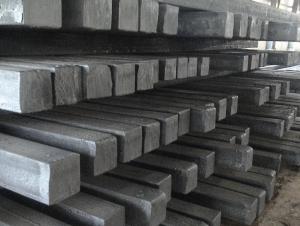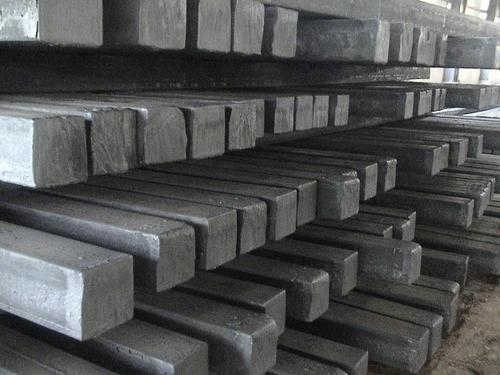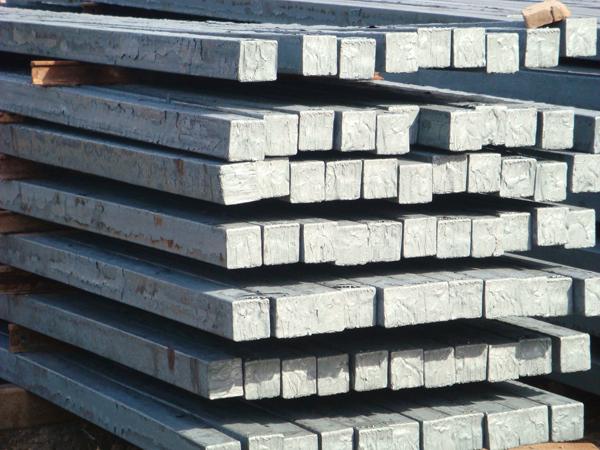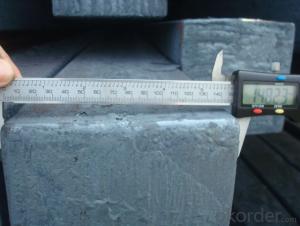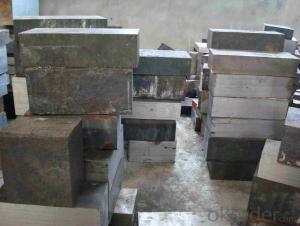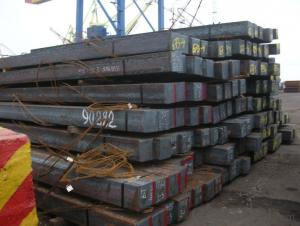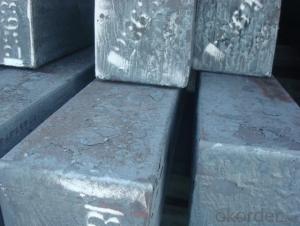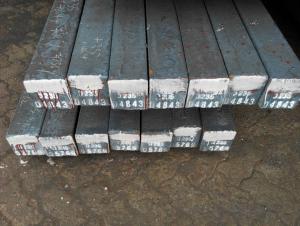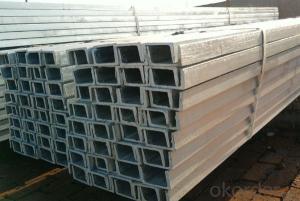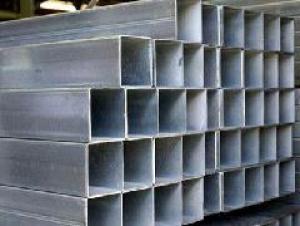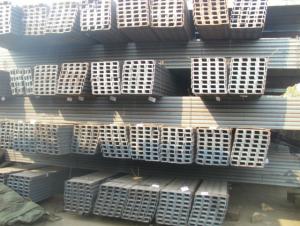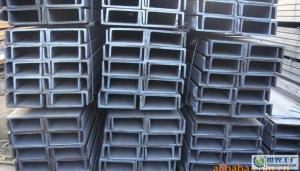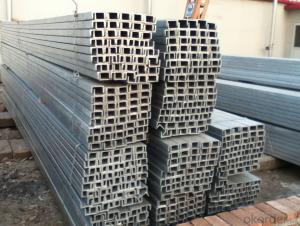Steel JIS U Channel GB Q235 Q345B 50-300MM EN 10025
- Loading Port:
- Tianjin
- Payment Terms:
- TT or LC
- Min Order Qty:
- 25 m.t.
- Supply Capability:
- 20000 m.t./month
OKorder Service Pledge
OKorder Financial Service
You Might Also Like
Product Description:
OKorder is offering high quality Hot Rolled Steel I-Beams at great prices with worldwide shipping. Our supplier is a world-class manufacturer of steel, with our products utilized the world over. OKorder annually supplies products to European, North American and Asian markets. We provide quotations within 24 hours of receiving an inquiry and guarantee competitive prices.
Product Applications:
According to the needs of different structures, Angle can compose to different force support component, and also can be the connections between components. It is widely used in various building structures and engineering structures such as roof beams, bridges, transmission towers, hoisting machinery and transport machinery, ships, industrial furnaces, reaction tower, container frame and warehouse etc
Product Advantages:
OKorder's Steel I-Beams are durable, strong, and resist corrosion.
Main Product Features:
· Premium quality
· Prompt delivery & seaworthy packing (30 days after receiving deposit)
· Corrosion resistance
· Can be recycled and reused
· Mill test certification
· Professional Service
· Competitive pricing
Product Specifications:
Manufacture: Hot rolled
Grade: Q195 – 235
Certificates: ISO, SGS, BV, CIQ
Length: 6m – 12m, as per customer request
Packaging: Export packing, nude packing, bundled
Sizes: 25mm-250mm | ||||||||||||
a*t | ||||||||||||
25*2.5-4.0 | 70*6.0-9.0 | 130*9.0-15 | ||||||||||
30*2.5-6.6 | 75*6.0-9.0 | 140*10-14 | ||||||||||
36*3.0-5.0 | 80*5.0-10 | 150*10-20 | ||||||||||
38*2.3-6.0 | 90*7.0-10 | 160*10-16 | ||||||||||
40*3.0-5.0 | 100*6.0-12 | 175*12-15 | ||||||||||
45*4.0-6.0 | 110*8.0-10 | 180*12-18 | ||||||||||
50*4.0-6.0 | 120*6.0-15 | 200*14-25 | ||||||||||
60*4.0-8.0 | 125*8.0-14 | 250*25 | ||||||||||
FAQ:
Q1: Why buy Materials & Equipment from OKorder.com?
A1: All products offered byOKorder.com are carefully selected from China's most reliable manufacturing enterprises. Through its ISO certifications, OKorder.com adheres to the highest standards and a commitment to supply chain safety and customer satisfaction.
Q2: How do we guarantee the quality of our products?
A2: We have established an advanced quality management system which conducts strict quality tests at every step, from raw materials to the final product. At the same time, we provide extensive follow-up service assurances as required.
Q3: How soon can we receive the product after purchase?
A3: Within three days of placing an order, we will begin production. The specific shipping date is dependent upon international and government factors, but is typically 7 to 10 workdays.
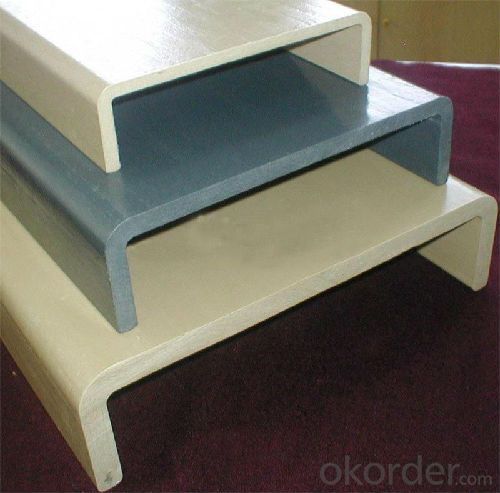
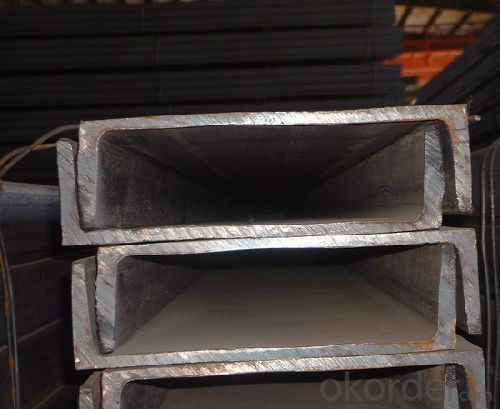
- Q: How are steel billets used in the manufacturing of shipbuilding parts?
- Steel billets play a crucial role in the manufacturing of shipbuilding parts. These billets are essentially semi-finished steel products, typically in the form of rectangular or square bars, that are used as raw material for further processing in shipbuilding. To begin with, steel billets are subjected to a process called rolling, where they are passed through a series of rollers to reduce their cross-sectional area and increase their length. This rolling process transforms the billets into long, thin sections of steel known as plates or sheets. These plates or sheets are then used to create various shipbuilding components, such as hulls, decks, bulkheads, and superstructures. After the rolling process, the steel plates or sheets are cut into desired sizes and shapes using cutting machines or torches. These cut pieces are then formed, bent, and welded together to form the required shipbuilding parts. For instance, the steel plates may be bent and welded to create curved sections for the ship's hull, or they may be formed into intricate shapes for other components. Moreover, steel billets are also used to produce forged shipbuilding parts. In this case, the billets are heated to a high temperature and then subjected to intense pressure to reshape the steel. This forging process results in stronger and more durable shipbuilding parts, which are often used for critical components like propeller shafts, crankshafts, and turbine blades. In summary, steel billets serve as the starting point in the manufacturing of shipbuilding parts. Through processes like rolling, cutting, forming, and forging, these billets are transformed into plates, sheets, and forged components that are used to construct the various structural and functional elements of ships.
- Q: How do steel billets contribute to the overall thermal insulation of a structure?
- Steel billets do not contribute directly to the overall thermal insulation of a structure. Thermal insulation is primarily achieved through the use of materials with low thermal conductivity, such as insulation boards or panels made from materials like fiberglass, foam, or mineral wool. Steel billets, on the other hand, are typically used as a raw material in the construction industry for various applications, such as the production of steel beams, columns, and other structural components. These components, when properly integrated into a building's structure, can indirectly contribute to the overall thermal insulation of a structure. For instance, steel beams and columns can help support and distribute the load of insulation materials, ensuring they remain in place and perform their insulating function effectively. Additionally, steel components can be designed to minimize thermal bridging, which is the transfer of heat between materials with different thermal conductivities. By reducing thermal bridging, steel components can help maintain a more uniform temperature throughout the structure and prevent heat loss or gain at these junctions. However, it is important to note that the primary role of steel billets in a structure is not thermal insulation. Instead, they provide structural stability, durability, and strength to the building. To achieve optimal thermal insulation, additional materials and construction techniques specifically designed for insulation purposes should be used in conjunction with steel components.
- Q: What are the main factors that affect the competitiveness of steel billets manufacturers?
- The competitiveness of steel billets manufacturers is heavily influenced by multiple factors. These factors have the ability to determine whether a manufacturer succeeds or fails in the highly competitive steel industry. 1. Raw material costs play a crucial role in determining competitiveness. The cost and availability of raw materials, such as iron ore and coal, have a significant impact. Fluctuations in these prices can affect overall production costs, so manufacturers must ensure they have a reliable and cost-effective source of raw materials. 2. Another key factor is production efficiency. Manufacturers need to streamline their production processes and utilize advanced technology to maximize output while minimizing costs. By improving production efficiency, manufacturers can achieve economies of scale, ultimately enhancing their competitiveness. 3. Quality control is of utmost importance. The quality of steel billets directly affects the performance and durability of the final products. Manufacturers must implement stringent quality control measures to meet industry standards consistently. By consistently producing high-quality steel billets, manufacturers can gain a competitive edge. 4. Keeping up with technological advancements is crucial for competitiveness. Manufacturers should invest in advanced machinery, automation, and digitalization to improve production efficiency, reduce costs, and enhance product quality. By adopting new technologies and continuously innovating, manufacturers can stay ahead of their competitors. 5. Energy costs significantly impact competitiveness. Steel billets manufacturing involves energy-intensive processes, and the cost of energy can be a determining factor. Access to affordable and reliable energy sources is essential for manufacturers to maintain competitive prices. 6. Market demand and competition are significant factors. Manufacturers must have a deep understanding of market trends, customer preferences, and emerging applications. This knowledge allows them to align their production accordingly. Additionally, a strong marketing strategy is necessary to effectively compete with other manufacturers. 7. Skilled labor availability is crucial. Skilled workers with expertise in steel production processes contribute to improved efficiency and quality. Manufacturers should invest in training programs and focus on attracting and retaining skilled workers to maintain competitiveness. 8. Government regulations and policies can impact competitiveness. Compliance with environmental regulations, labor laws, and trade policies can add to costs and administrative burden for manufacturers. Adapting to changing regulations and aligning with industry standards is necessary to maintain competitiveness. In conclusion, the competitiveness of steel billets manufacturers is influenced by various factors. Raw material costs, production efficiency, quality control, technological advancements, energy costs, market demand and competition, access to skilled labor, and government regulations all play a role. Addressing these factors strategically is essential for manufacturers to stay competitive in the ever-evolving steel industry.
- Q: How do steel billets contribute to the manufacturing of automotive components?
- Steel billets are the starting point for the manufacturing of automotive components as they are heated and shaped into various forms such as rods, bars, and sheets. These billets are strong, durable, and can be easily molded into the desired shape, making them ideal for producing structural automotive parts like engine blocks, chassis, and suspension components. Additionally, steel billets provide the necessary strength and stability required to withstand the harsh conditions and loads experienced by automotive components, ensuring the overall safety and reliability of vehicles.
- Q: What are the different methods of steel billet surface finishing?
- In the industry, various techniques are commonly employed for the surface finishing of steel billets. These techniques comprise: 1. Shot blasting: Shot blasting is a prevalent method utilized to cleanse and prepare steel billets for subsequent processing. It entails propelling abrasive particles onto the billet surface at high velocities. This process effectively eliminates rust, scale, and impurities, resulting in a pristine and smooth finish. 2. Grinding: Grinding is an alternative approach employed to attain a smooth and uniform surface finish on steel billets. It involves the utilization of abrasive wheels or belts to remove material from the billet surface. Depending on the billet size and requirements, grinding can be performed manually or using automated machinery. 3. Polishing: Polishing is generally employed to achieve a glossy and reflective finish on steel billets. This process entails the use of polishing compounds and buffing wheels to refine the surface and enhance its appearance. Polishing is commonly employed for decorative purposes or when a high-quality finish is desired. 4. Acid pickling: Acid pickling is a technique employed to eliminate oxide scale or rust from the surface of steel billets. It involves immersing the billets in an acid solution, such as hydrochloric acid, to dissolve impurities. Acid pickling is an effective method for achieving a uniform and clean surface finish on steel billets. 5. Passivation: Passivation is frequently employed to enhance the corrosion resistance of steel billets. It involves immersing the billets in a passivating solution, typically a mixture of nitric acid and water, to eliminate surface contaminants and facilitate the formation of a protective oxide layer. Passivation aids in preventing rust formation and prolonging the lifespan of steel billets. In conclusion, the selection of a suitable method for steel billet surface finishing depends on the desired finish, billet size and shape, and specific application requirements. Each method offers unique advantages and considerations. Therefore, careful consideration is crucial in selecting the appropriate technique to achieve the desired surface finish.
- Q: How are steel billets inspected before they are used in production?
- Steel billets are inspected thoroughly before they are used in production to ensure their quality and adherence to the required specifications. The inspection process typically involves several key steps. Firstly, visual inspection is conducted to examine the surface of the billets for any surface defects such as cracks, seams, or deformities. Any irregularities can indicate potential weaknesses or problems in the billet that may affect its performance during production. Secondly, dimensional inspection is performed to verify the billet's size, length, width, and other critical dimensions. This is crucial to ensure that the billets meet the precise requirements of the production process and can be seamlessly integrated into the manufacturing operations. Thirdly, ultrasonic testing is often employed to detect any internal defects or discontinuities within the billets. Ultrasonic waves are passed through the billet, and any reflections or echoes are analyzed to identify any flaws such as voids, inclusions, or cracks that may compromise the structural integrity of the billets. Additionally, magnetic particle inspection may be carried out to identify surface or near-surface defects that may not be visible to the naked eye. This technique involves applying magnetic particles to the surface of the billet and detecting any magnetic leakage caused by defects through the use of magnetic fields. Furthermore, chemical analysis is frequently performed to ensure that the steel billets have the desired chemical composition. This involves taking samples from the billets and subjecting them to various tests to determine the percentages of different elements present. This analysis guarantees that the billets possess the necessary chemical properties for the intended application. Overall, steel billets undergo a comprehensive inspection process that encompasses visual examination, dimensional verification, ultrasonic testing, magnetic particle inspection, and chemical analysis. This multi-faceted approach ensures that the billets meet the required quality standards and are suitable for use in production, thus minimizing the risk of any performance issues or failures during manufacturing processes.
- Q: How are steel billets used in the production of industrial furnaces?
- Steel billets serve as a vital element in the manufacturing of industrial furnaces, being a key component required for the production of different furnace parts. To start off, the furnace shell or casing, which is responsible for providing structural integrity and containment, is fabricated using steel billets. These billets are shaped and welded together, forming a robust outer shell capable of enduring the high temperatures and harsh conditions inside the furnace. Additionally, steel billets are utilized in the creation of furnace doors and access panels. These components need to possess strength and resistance to deformation caused by the intense heat generated within the furnace. By employing steel billets, manufacturers can ensure that the doors and access panels are easily operable while maintaining their structural integrity over time. Furthermore, steel billets are also employed in the construction of furnace grates and supports. These components play a crucial role in holding and supporting the materials undergoing heating inside the furnace. By utilizing steel billets, manufacturers are able to fabricate sturdy and heat-resistant supports capable of withstanding heavy loads and high temperatures for extended periods. Moreover, steel billets are frequently employed in the fabrication of heat exchangers within industrial furnaces. Heat exchangers are vital for transferring heat from the combustion chamber to the materials being processed. The use of steel billets ensures that the heat exchangers possess exceptional thermal conductivity and can endure the corrosive effects of the furnace environment. Overall, steel billets have a critical function in the production of industrial furnaces, providing the necessary strength, durability, and resistance to heat required for the various components. Without steel billets, the manufacturing of furnaces capable of withstanding the extreme conditions encountered in industrial processes would be quite challenging.
- Q: What is the role of steel billets in the manufacturing of railway wheels?
- The production of railway wheels heavily relies on steel billets, which serve as the primary raw material. These billets are crucial in creating wheels that possess exceptional strength, durability, and the ability to endure heavy loads, extreme temperatures, and constant wear and tear. To begin with, steel billets undergo a melting process and are then shaped into a cylindrical form, similar to the final shape of the railway wheel. Subsequently, these billets go through a series of manufacturing steps, including hot rolling, forging, and machining, to achieve the desired shape and dimensions of the railway wheel. One of the key advantages of using steel billets lies in their remarkable strength and toughness. Steel is widely recognized for its exceptional mechanical properties, such as high tensile strength and hardness. These characteristics are indispensable for railway wheels, as they need to bear immense loads and resist deformation even under extreme pressures. Furthermore, steel billets provide the necessary metallurgical properties essential for railway wheels. They can be alloyed with additional elements like carbon, manganese, and chromium to enhance their strength, hardness, and resistance to corrosion and fatigue. This ensures that the railway wheels maintain their structural integrity and performance over an extended period. In conclusion, steel billets play a fundamental role in the manufacturing process of railway wheels. They provide the raw material needed to create robust, durable, and dependable wheels that can withstand the challenging conditions of railway operations. By utilizing steel billets, railway wheels are able to meet the strict safety, performance, and longevity requirements of the transportation industry.
- Q: Does anyone know how much it costs to refine a ton of steel? What are the expenses involved?
- Electricity, water, wages, raw materials, raw materials loss, charges, oxygen, according to their own circumstances, as well as freight and other expenses,
- Q: What is the role of steel billets in the construction of residential buildings?
- Steel billets are an essential component in the construction of residential buildings as they serve as the raw material for manufacturing various structural steel elements. These billets are heated, shaped, and transformed into different forms such as beams, columns, and reinforcing bars, which provide strength and stability to the building's framework. Additionally, steel billets are also used in the fabrication of other critical components like wall panels and roof trusses, ensuring durability and safety in residential construction.
Send your message to us
Steel JIS U Channel GB Q235 Q345B 50-300MM EN 10025
- Loading Port:
- Tianjin
- Payment Terms:
- TT or LC
- Min Order Qty:
- 25 m.t.
- Supply Capability:
- 20000 m.t./month
OKorder Service Pledge
OKorder Financial Service
Similar products
Hot products
Hot Searches
Related keywords
